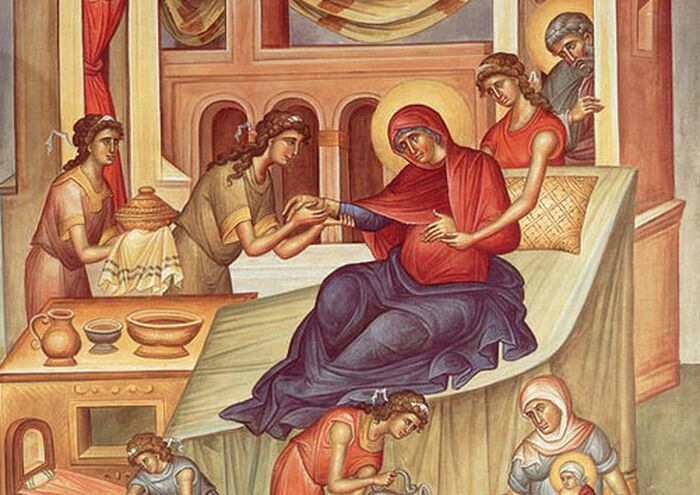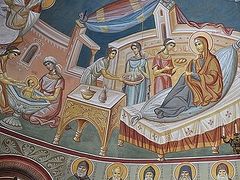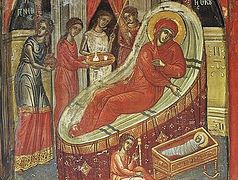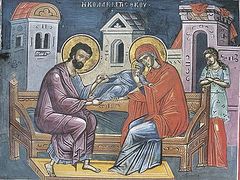In a world of memories, every man can only imagine what his own birth was like, not to mention the birth of our mothers. But there is also the Nativity of the Nativity. Every year, as soon as seven days have passed since the beginning of the new Church year, we celebrate the Nativity of the Mother of God.
o matter how much we search for the end of a wreath we will not find it, for it, has neither a beginning nor an end; but if we keep searching, we will find that it has a center. In the annual wreath of the feasts of the saints, the Nativity of the Most Holy Theotokos is the center: A sweet, true, and above all, ecclesiastical center.
The Nativity of the Theotokos is the sweetest center of our existence, because it’s the birth of joy. Now the entire human race is being renewed, and Eve’s sorrow is being transformed into joy. From the pain of childbirth appointed for Eve, to the fullness of grace revealed to the Most Holy Virgin Mary, lies the path of this sweetest celebration. All creation visible and invisible feasts on the day of this feast, upon this inextinguishable center. The Creator, having become human, raises creation to a state of holiness. What sweetness could be greater than the fact that the Word of God, the Creator, is united with human nature—and thereby with the whole of creation?
The Nativity of the Mother of God is the sweetest center of Church feasts, because it brings us not only the release from human infirmities, but also the distribution of Divine gifts.
The Nativity of the Mother of God is the true heart of our feasts, because now is revealed the door by which we can return to the Father of lights. Now is the beginning of the salvation of the world. The Nativity is the beginning, however the end is not death, but Resurrection.
Anyone who doesn’t confess the Most Holy Virgin to be the Theotokos is found to be outside of God—this is the truth first uttered by St. Gregory the Theologian.
The beginning of the salvation of the ages, being born now, opens a new book in the history of salvation—a book in which the Savior Himself will write with the hand of the Holy Spirit. The door through which Light comes into the world becomes a true source of life.
The Nativity of the Mother of God is the core of the feast of the saints, because the history of the Fall stops for a moment—the moment when the history of the Nativity begins for mankind. Hope, joy, forgiveness, and reconciliation become cardinal features of Church life.
Thanks to our birth, we become collaborators with the saints. Without birth, no one can build relationships with anyone, and even less so can they attain to Communion—that is, enter into the Feast. Today people give birth to children, monks give birth to saints, and saints give birth to feasts.
***
The Nativity of the Mother of God is the birth of the Mother. When we say “mother,” we acknowledge that we were born. And although no one remembers his own birth, it’s good not to forget your mother.
Living in a world of births, the birth of this Mother is the Nativity of the Nativity.
The Nativity of the Mother of God is the pledge that mankind gives for its salvation. Without this Nativity, the Word Himself would not have appeared, we wouldn’t have understood one another, and the world wouldn’t have been able to pray: “Over the word that passes away, / over the heavy body of honey, / over this cold world, / come, sweet breeze. // Your warm prayer comes/ like a feeble teardrop, / Holy Mother and Virgin / Holy, Holy, Holy //. Amen.




